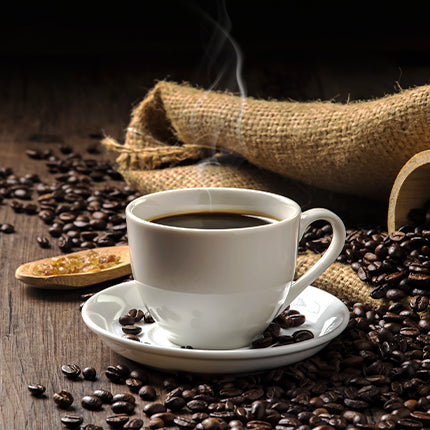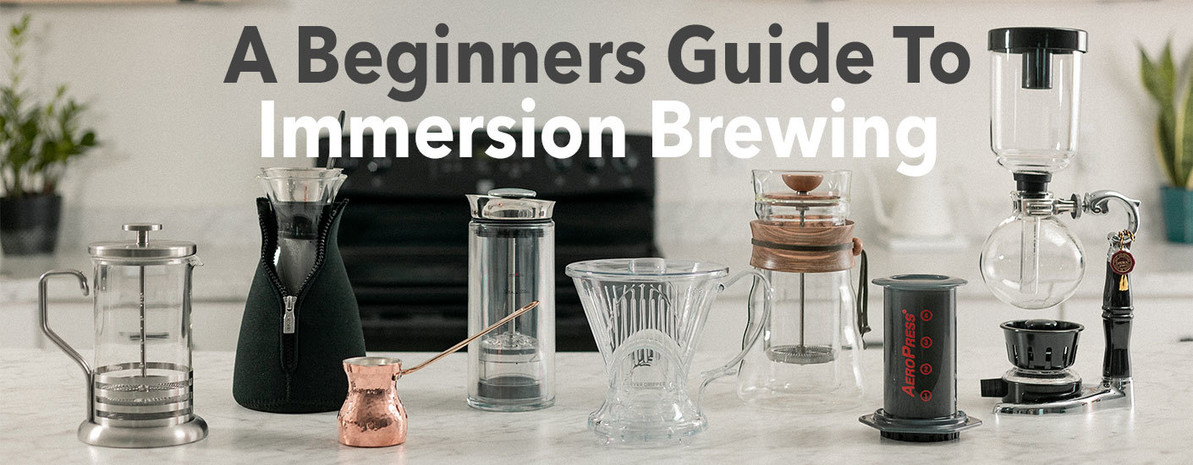Checking Out the Art of Coffee Developing: A Comprehensive Guide to Developing Your Cup
The art of coffee developing is a multifaceted self-control that combines science with individual expression, where the choice of beans, water high quality, and brewing methods assemble to produce a refined sensory experience. Comprehending the subtleties of various coffee beans, especially the differences between Arabica and Robusta, is vital for any kind of enthusiast. The selection of suitable devices and thorough attention to brewing parameters can substantially affect the last result. As we discover these components, one must take into consideration how even minor adjustments can result in profound modifications in taste and scent-- what might these changes reveal regarding your suitable mug?
Understanding Coffee Beans
To really appreciate the art of coffee brewing, one must initially recognize the fundamental aspect: coffee beans. These small seeds, generally stemmed from the Coffea plant, are essential in figuring out the flavor profile, fragrance, and total high quality of the brewed drink. Coffee beans largely drop into 2 categories: Arabica and Robusta. Arabica beans, known for their fragile flavors and higher level of acidity, are commonly favored by connoisseurs. In comparison, Robusta beans possess a stronger, extra bitter taste and higher caffeine web content, making them appropriate for espresso blends.

Moreover, the processing approach-- whether washed, natural, or honey-- impacts the beans' last taste. Comprehending these aspects permits brewers to select the ideal beans that straighten with their chosen flavor account, inevitably enhancing the coffee brewing experience. coffee brewing methods. This comprehension is crucial for anyone desiring grasp the craft of making the excellent mug of coffee
Brewing Methods Described
Lots of fanatics locate that the choice of brewing method considerably affects the last taste and fragrance of their coffee. Each method utilizes different extraction methods, influencing the coffee's character and richness.
Drip brewing, one of the most popular methods, uses a device to leak warm water with ground coffee, creating a consistent and clean mug. French press, on the various other hand, submerses coffee premises in hot water, permitting a fuller body and even more durable taste, as oils and great bits stay in the brew.
Pour-over brewing offers a meticulous approach, where water is by hand put over coffee grounds, permitting accurate control over extraction time and temperature level, causing a nuanced and brilliant cup.
Espresso, a focused coffee made under pressure, is known for its solid flavor and luscious texture, working as the base for numerous coffee drinks, including cappuccinos and cappucinos.
Necessary Devices Needed
The structure of any type of effective coffee brewing process lies in high quality tools tailored to your recommended method. A trustworthy coffee grinder is vital; fresh ground beans considerably boost flavor and scent.
Following, consider your brewing gadget. Alternatives range from drip coffee manufacturers and pour-over arrangements to French presses and espresso makers. Each approach offers unique taste accounts and brewing techniques, so pick one that aligns with your taste preferences.
An accurate scale is also vital, permitting you to read measure coffee and water accurately, which is crucial for uniformity. In addition, a thermostat can aid monitor water temperature, as it directly influences removal top quality.
Learning Water Top Quality
The top quality of water made use of in developing coffee plays a substantial role in determining the final taste account of the mug. Different aspects contribute to water high quality, including mineral content, pH degree, and total pureness. Ideally, water should be free from contaminants and contaminations, as these can detrimentally impact the taste of coffee.
Minerals, such as calcium and magnesium, enhance the removal of flavors from the check out this site coffee grounds, while keeping a well balanced pH level-- around 6.5 to 7.5-- is important for optimal extraction. Water that is too soft might cause under-extraction, leading to sour or weak tastes, while excessively hard water can generate a bitter or extreme cup.
For the very best outcomes, filtered water is recommended, as it reduces the existence of chlorine and other unwanted compounds frequently found in faucet water. Additionally, take into consideration utilizing water with a Total Dissolved Solids (TDS) degree between 150-200 ppm, which is usually optimal for coffee brewing. By grasping water quality, you can lay a strong foundation for accomplishing a consistently superb cup of coffee, permitting the distinct features of your selected beans to beam through.

Tips for Taste Improvement
Enhancing the flavor of your coffee can dramatically raise your developing experience and bring out the one-of-a-kind nuances of your selected beans. To attain this, think about numerous key aspects that affect taste.
First of all, the work dimension plays an essential function. A finer work increases extraction, causing bolder tastes, while a coarser grind yields a milder mug. coffee brewing methods. Readjust your grind according to your brewing technique to accomplish optimum results
Secondly, experiment with mixture time. Over-extraction can bring about bitterness, while under-extraction results in a sour taste. Go for a mixture time that stabilizes these extremes, generally between two to four mins, relying on your approach.
Additionally, temperature is an important element. Brewing with water that is as well warm can swelter the coffee, while water that is also awesome may stop working to draw out appropriate taste. The suitable temperature level array is 195 ° F to 205 ° F(90 ° C to 96 ° C)
Verdict) )))) Finally, the art of coffee brewing is a complex method that needs a deep understanding of different aspects, including bean choice, brewing methods, and water quality. Mastery of essential equipment and attention to information in work dimension, brew time, and temperature are essential for achieving optimal extraction. By integrating these components, coffee enthusiasts can boost their developing methods, leading to a cup that not only pleases individual preferences but also showcases the abundant intricacy of coffee flavors.
The art of coffee developing is a diverse discipline that combines science with individual expression, where the choice of beans, water top quality, and brewing approaches assemble to develop a refined sensory experience.To genuinely value the art of coffee developing, one should initially understand the fundamental element: coffee beans. Developing with water that is too warm can scorch the coffee, while water that is as well awesome might fail to draw out adequate taste. In verdict, the art of coffee brewing is a diverse technique that requires a deep understanding of numerous elements, including bean option, brewing techniques, and water top quality. By integrating these elements, coffee fanatics can elevate their developing strategies, resulting in a cup that not only pleases individual choices yet also showcases the abundant like this intricacy of coffee flavors.